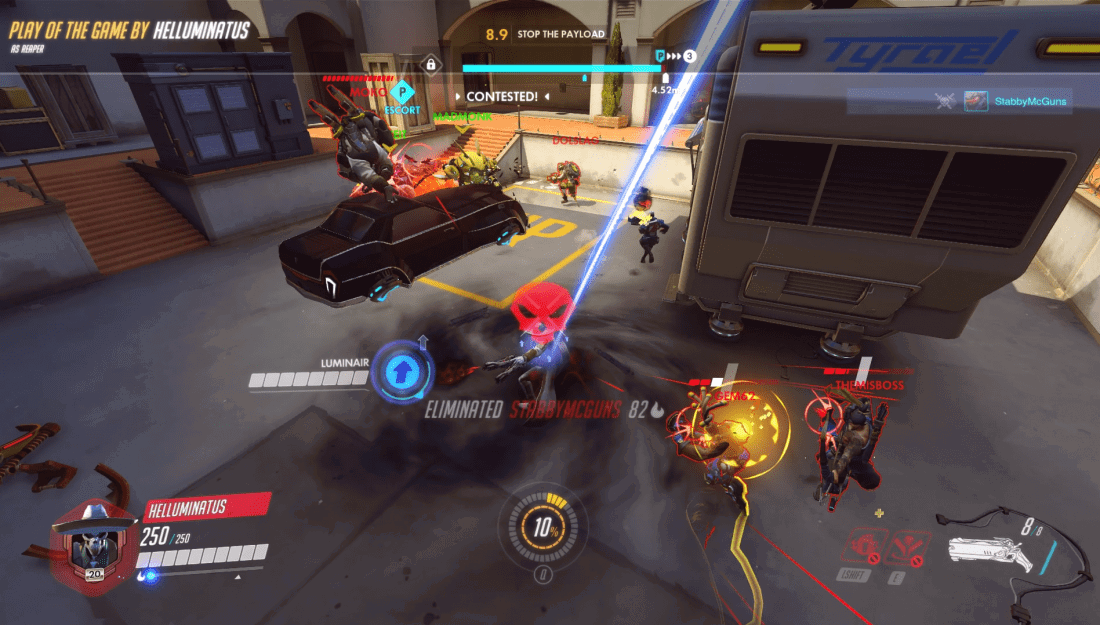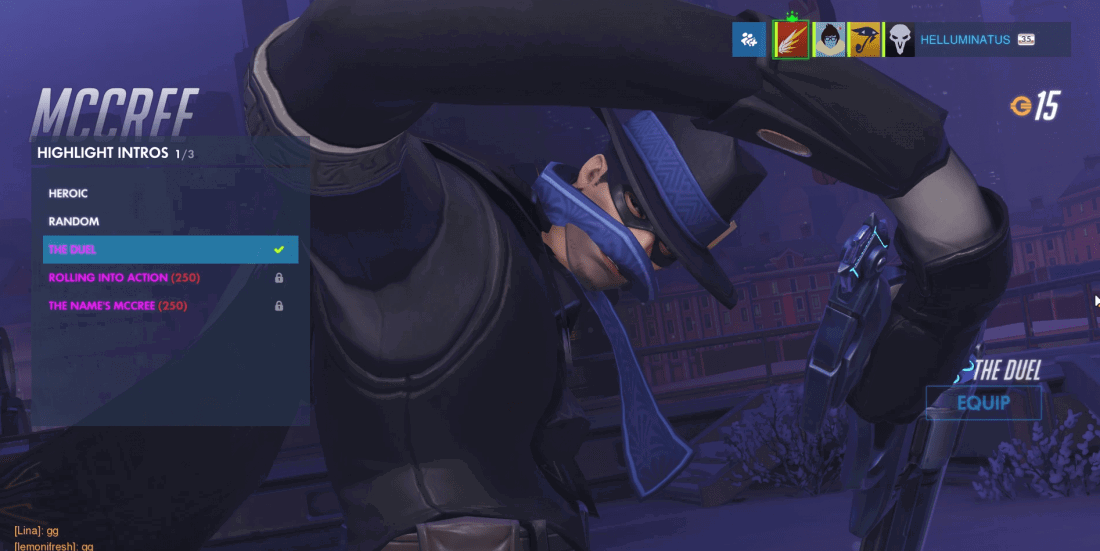In the twilight years of the 2000’s and the youth of the 2010’s, one objective-based first-person shooter reigned above them all: Team Fortress 2. With radically different classes, interestingly-designed levels, and near limitless replay value, TF2 rocked the world of online gaming.
However, nothing lasts forever. After several years, TF2 took on a free to play model, introducing more and more players to the community; be they good, bad, or alternate accounts for cheaters. Between the flood of unfavorables, insane weapon saturation, the explosion of hat culture, and sheer time since the game went live; many players moved on. They looked for something new to fill the void that was once occupied by a game they spent hundreds of hours on.
Now, the game that would fill this void, is here.
Game Name: Overwatch
Platform(s): PC, Xbox One, PS4
Publisher(s): Blizzard Entertainment
Developer(s): Blizzard Entertainment
Release Date: 5/24/2016
Price: $39.99 (standard) $59.99 (Origins Edition)
Reviewed on PC
Overwatch is an objective-based first-person shooter. The idea is simple enough, a shooter that is focused on concrete external objectives rather than deathmatch or other arena-based gameplay styles. With that said, what makes Overwatch stand out is not its modes of play, but its incredibly diverse roster of classes (heroes). At the time of writing, there are 21 heroes, each which brings an entirely unique playstyles and an arsenal of primary weapons, dual skills, and one ultimate (save for a secondary weapon or third skill on certain heroes). Of course, this is an objective-based game, and as such the choices made as heroes are paramount. Offensive characters usually have above-average mobility and high utility and/or damage output, defensive characters lack speed but are powerful in stationary situations such as fighting over objectives, tanks have high health pools and come with skills to prolong their survival. Supports have healing and/or high strategic utility.
With all this diversity, Blizzard has gone a step beyond and made some characters have abilities once inconceivable. For example, Soldier 76’s ultimate allows him to shoot enemies without missing any shots, otherwise known as aimbotting; Widowmaker’s ultimate grants her team infra-red vision, revealing the position of enemies in the map, a method commonly referred to as wallhacking. Though these are extreme examples, the design philosophy is clear, every hero is strong, so much so that counterpicks become necessary. Even on the box of the PC version of the origin edition states “Master the game within the game (meta) as both teams switch strategies and change heroes in a constant dance to gain the upper hand.”
Strategy is of the utmost importance, and as such, so too is knowing what heroes to use. This not only speaks to which heroes should be used in what maps or modes, but also to what heroes should be employed if certain other heroes are present in the enemy team (or your own for that matter). As such, it’s important to go into Overwatch abandoning the notion of a “main.” Of course, to have a “best” or “favorite” character is normal, but no character is fit for every situation, and you risk a lot by using the wrong character at the wrong time.

Gameplay aside, Overwatch provides a multitude of vibrant locations from across the globe, all in a pixar-esque style to mirror the characters that inhabit them. What’s particularly interesting is the amount of destructible or otherwise intractable set pieces on each map, specifically in the attacker holding rooms. Every such room functions to hold the attacking team if a match outside of the field of play so as to allow the defending team to set themselves up. Though such a room has the capacity to be extremely boring, each of these rooms has little touches, such as fire extinguishers that go flying from their new leak, bottles of champagne that eject their corks and make their trademark “pop” when shot, and even a set of bells that play the Futurama theme when shot in the right order. It’s really not much of anything, but sometimes it’s the little things that count most.
On a larger scale, though, is the character design. Each and every character is absolutely dripping with personality: from the way they walk, to the way they’re built, and even to the way they play. Thanks to this, each and every character is incredibly distinct (though an oddly high amount of them do have a prosthetic of some sort).

That’s all the technicality out of the way, now let’s talk nitty-gritty. The heroes all bring something to the table, and it really is incredible how distinct that these traits are. Take Tracer for example: she has incredible mobility and can even reverse time to undo damage taken and space covered. Nobody else can move like her, not even slightly. Then there’s Lucio, who can either heal or speed up teammates passively; in fact, every healer in the game has a completely different method of healing, thanks to mercy’s mirroring that of the medic in TF2 and Zenyatta’s being a heal over time that can be cast and forgotten. And who could forget Roadhog, who uses his massive chain to pull in enemies and deal massive damage to them with his shotgun. This dynamic barely feels like a traditional tank’s MO, and as such allows non-fans of the role to play someone who can be fun despite their purpose in the game. Then of course there are the ultimates, which run the gambit from dealing massive area damage to causing a mass stun to even resurrecting all teammates in a set area. With so many options and possible synergies, there is limitless potential within the meta of Overwatch, but only time will tell.

In the end, Overwatch is a fantastic experience. The characters are all a joy to play, the game modes are all fun in their own way, and the replay value is through the charts. With that said, there are a few points I want to close with if you’re on the fence. Overwatch, as I have stated, is objective-based. This means that you will constantly have to work as a team to achieve your goals. That may not really sound like the letdown I meant it to be to some, but the fact of the matter is that sometimes, people just want a good shoot ’em up romp to come back to. With teams of no more than six and no mode like arena or team deathmatch, some might be turned off due to having to either play serious or lose at almost all times. However, if you can live without the feeling of an deathmatch style game type, or even having teams larger than six people, Overwatch delivers on every level.
Overwatch
Overwatch Overwatch is the spiritual successor to TF2 in many ways, and if you haven’t heard it said before, it’s worth a look if you come from there. Even for total newcomers, though; the world, the characters, and the sheer chaos of skills, ultimates, and counter picks makes this game not worth missing.
Pros:
- Fantastically styled world
- Unique characters, both in and out of gameplay
- Untold replay value
Cons:
- Limited to objective-based modes
- The Sheer volume of beginner complaints will burn the word “bastion” onto your monitor or TV screen
-
Cavalry's here. And here to stay.



